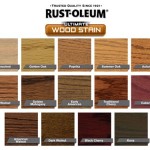Best Silicone Caulk For Interior Windows: A Comprehensive Guide
Selecting the appropriate silicone caulk for interior windows is paramount to achieving a durable, weather-resistant, and aesthetically pleasing seal. Caulk plays a crucial role in preventing drafts, minimizing energy loss, and protecting against moisture intrusion, contributing to a more comfortable and energy-efficient living environment. With a wide array of silicone caulk products available, understanding the specific requirements of interior window applications is essential for making an informed decision.
This article will explore the key attributes of effective silicone caulk for interior windows, discuss various types of silicone caulk and their suitability for different window materials and conditions, and provide guidance on selecting the optimal caulk for various projects. Considerations such as durability, flexibility, paintability, and resistance to mold and mildew will be examined to assist in the selection process.
Understanding the Requirements for Interior Window Caulk
Interior window caulk must meet specific performance criteria to ensure long-lasting effectiveness. Key performance criteria include flexibility, adhesion, and resistance to environmental factors. Flexibility is crucial because windows and surrounding building materials expand and contract with temperature fluctuations. A caulk that lacks sufficient flexibility will crack and lose its seal, rendering it ineffective.
Adhesion refers to the caulk's ability to firmly bond to the window frame and surrounding surfaces (e.g., drywall, plaster, wood trim). Weak adhesion leads to gaps, allowing air and moisture infiltration. Proper surface preparation, including cleaning and priming, is vital for achieving optimal adhesion. The caulk must also resist environmental factors such as UV exposure, humidity, and temperature variations, even though interior environments are less exposed than exteriors.
Moreover, a good interior window caulk should be low in volatile organic compounds (VOCs). VOCs are chemicals that evaporate from the caulk and can contribute to indoor air pollution. Choosing a low-VOC or VOC-free caulk is essential for maintaining healthy indoor air quality, especially in enclosed spaces.
Types of Silicone Caulk for Interior Windows
Various types of silicone caulk are available, each with specific properties that make them suitable for different applications. Understanding the distinctions between these types is crucial for selecting the right caulk for interior windows. Common types include 100% silicone caulk, acrylic latex caulk with silicone, and hybrid formulations. While pure silicone caulk is preferred for many applications, certain mixtures can offer advantages based on specific needs.
100% Silicone Caulk: This type of caulk offers superior flexibility, durability, and water resistance. It forms a watertight seal that can withstand temperature extremes and movement without cracking. 100% silicone caulk is typically more expensive than other types but provides superior long-term performance for critical sealing applications.
Acrylic Latex Caulk with Silicone: This type combines the ease of application and paintability of acrylic latex caulk with the improved flexibility and water resistance of silicone. It is generally less expensive than 100% silicone caulk and is suitable for applications where paintability is a primary concern. However, it may not offer the same level of durability and water resistance as 100% silicone caulk.
Hybrid Polymer Caulk: Hybrid polymer caulk combines the advantages of both silicone and polyurethane caulks. It provides excellent adhesion, flexibility, and durability, and is often paintable. Hybrid caulk is generally more expensive than acrylic latex caulk but offers superior performance in demanding applications.
It's also vital to consider the cure time of the caulk. Some caulks cure faster than others, which may be a factor in project timelines. Read the manufacturer's instructions carefully to ensure the proper cure time is allowed before exposing the caulk to moisture or stress.
Key Properties to Consider When Choosing Silicone Caulk
Selecting the best silicone caulk for interior windows requires careful consideration of several key properties. These properties determine the caulk's performance, longevity, and suitability for specific applications. Crucial properties include adhesion, flexibility, paintability, mold and mildew resistance, and color.
Adhesion: The caulk's ability to adhere strongly to the window frame and surrounding surfaces is paramount. A caulk with excellent adhesion will create a durable, watertight seal that prevents air and moisture infiltration. Look for caulks specifically formulated for use on glass, wood, vinyl, or other materials relevant to the window and its surrounding surfaces.
Flexibility: Windows and surrounding materials expand and contract with temperature changes. A flexible caulk can accommodate this movement without cracking or losing its seal. 100% silicone caulk typically offers superior flexibility compared to other types. Check the manufacturer's specifications for the caulk's elongation and recovery properties, which indicate its ability to stretch and return to its original shape.
Paintability: If the caulk needs to be painted to match the surrounding decor, choose a paintable caulk such as acrylic latex caulk with silicone or a paintable hybrid polymer caulk. 100% silicone caulk is generally not paintable, as paint does not adhere well to its surface. Always test the paint's compatibility with the caulk in an inconspicuous area before applying it to the entire surface.
Mold and Mildew Resistance: Interior windows, particularly in bathrooms and kitchens, are prone to mold and mildew growth. Choose a caulk that contains antimicrobial agents to inhibit the growth of mold and mildew. Look for caulks specifically labeled as mold-resistant or mildew-resistant.
Color: Silicone caulk is available in various colors, including white, clear, and various shades of gray, brown, and black. Choose a color that matches the window frame or surrounding trim for a seamless appearance. Clear caulk is a versatile option for applications where matching the existing color is difficult.
Surface Preparation for Optimal Caulk Adhesion
Proper surface preparation is critical for achieving optimal caulk adhesion and ensuring a long-lasting, watertight seal. The surfaces to which the caulk will be applied must be clean, dry, and free of loose debris, old caulk, and contaminants. Failure to properly prepare the surfaces can lead to poor adhesion and premature caulk failure.
Begin by removing any old caulk using a caulk removal tool or a utility knife. Soften the old caulk with a heat gun or caulk remover solvent to make it easier to remove. Be careful not to damage the window frame or surrounding surfaces during the removal process.
Next, clean the surfaces with a mild detergent and water. Remove any grease, oil, or dirt that could interfere with caulk adhesion. Rinse the surfaces thoroughly with clean water and allow them to dry completely.
For porous surfaces such as wood or drywall, apply a primer to improve caulk adhesion. Choose a primer that is compatible with both the caulk and the substrate. Allow the primer to dry completely before applying the caulk.
In some cases, it may be necessary to use a backer rod to fill large gaps between the window frame and the surrounding surfaces. A backer rod provides a consistent surface for the caulk to bond to and prevents the caulk from sinking too deeply into the gap.
Application Techniques for Silicone Caulk
Applying silicone caulk properly requires attention to detail and the use of appropriate techniques. A smooth, consistent bead of caulk is essential for creating a watertight seal and achieving a professional-looking finish. The following steps outline the recommended application process:
Prepare the Caulk Gun: Load the caulk cartridge into the caulk gun and cut the tip of the nozzle at a 45-degree angle, creating an opening that is slightly smaller than the width of the gap to be filled. Puncture the seal inside the nozzle using a wire or nail.
Apply the Caulk: Hold the caulk gun at a 45-degree angle to the surface and apply a steady, consistent bead of caulk along the joint. Apply sufficient pressure to ensure that the caulk fills the gap completely but avoid applying excessive amounts.
Smooth the Caulk Bead: Immediately after applying the caulk, smooth the bead with a wet finger or a caulk smoothing tool. This will create a clean, professional-looking finish and ensure that the caulk is properly bonded to the surfaces. Wipe away any excess caulk with a damp cloth.
Allow the Caulk to Cure: Allow the caulk to cure according to the manufacturer's instructions. Avoid exposing the caulk to moisture or stress during the curing process. Cure times can vary depending on the type of caulk and environmental conditions.
Clean Up: Clean up any spills or excess caulk with a damp cloth or mineral spirits. Dispose of used caulk cartridges and nozzles properly.
Troubleshooting Common Caulk Problems
Even with careful application, certain problems can arise with silicone caulk. Understanding these common issues and knowing how to address them is essential for achieving a successful caulking project. Problems include cracking, shrinking, and poor adhesion.
Cracking: Cracking occurs when the caulk lacks sufficient flexibility to accommodate movement between the substrates. Choose a more flexible caulk, such as 100% silicone or hybrid polymer caulk, for areas subject to significant movement.
Shrinking: Shrinking occurs when the caulk loses volume as it cures. This can lead to gaps and loss of seal. Choose a high-quality caulk with low shrinkage properties and avoid applying excessively thick beads of caulk.
Poor Adhesion: Poor adhesion occurs when the caulk fails to bond properly to the surfaces. Ensure that the surfaces are properly cleaned and primed before applying the caulk. Choose a caulk that is specifically formulated for use on the substrate materials.
Mold and Mildew Growth: Mold and mildew growth occurs when the caulk is exposed to moisture and organic matter. Choose a caulk that contains antimicrobial agents to inhibit the growth of mold and mildew. Clean the caulk regularly with a mold and mildew cleaner to prevent growth.

How To Caulk Windows Modernize
What Is The Best Caulking For Windows

What Is The Best Caulking For Windows

How To Winterize Your House With Caulk

What Is The Best Caulking For Windows

How To Caulk Windows

Interior Window Seal Need Replacing Here S How To Diy It Claire Douglas Styling

How To Caulk Window Trim Like A Pro Premier Building Restoration Inc

Dap Silicone 9 8 Oz Clear Exterior Interior Window Door And Siding Sealant 12 Pack 7079808641 The Home Depot

How To Caulk Windows For Winter Eikenhout Inc
Related Posts








